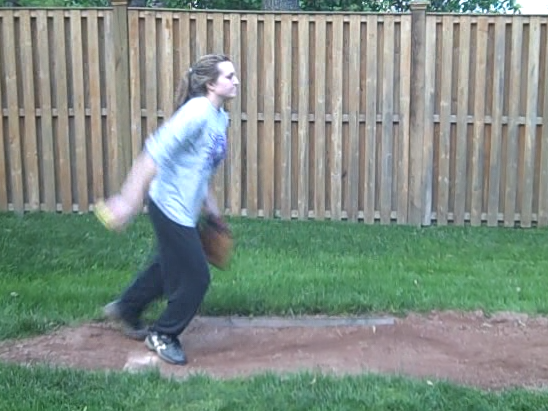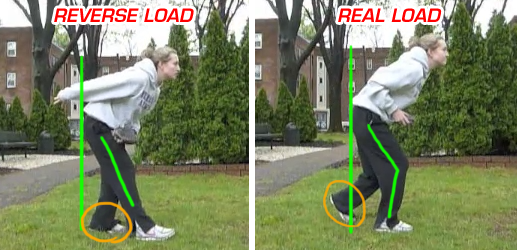Is your Pre-Motion Hurting your Pitch? Part 1
What is the Pre-Motion in Windmill Pitching?
The very first thing you do when you set out to throw a windmill pitch is the pre-motion. Some of you may call it the wind-up, but they’re the same thing. Your pre-motion has a simple and very specific job to do: it must get you relaxed, get you loaded, and get you ready to throw the next pitch as effectively as possible. There are a number of ways in which a poor pre-motion can really diminish the effectiveness of your pitches, and in this series of posts I’m going to show you the most common ones. Unlike some other mechanical issues a windmill pitcher might have, the pre-motion is relatively easy to change with a little concentration, so I really recommend that you follow along and try to adopt these suggestions. We’re going to start with the most important aspect of the pre-motion: the load. I bet you all think you’re loading, but I guarantee some of you are not.
Are You Loading or Fake-Loading?
If you aren’t familiar with the term “load,” I recommend you read our introduction to pitching terms to familiarize yourself with our language in general. To put it simply, this is the load:
It’s the part of your pre-motion where you get 100% OF YOUR WEIGHT on the foot you’re going to use to push off the rubber. That’s bold and all caps for a reason. I don’t mean 50% or 75%. I mean ONE HUNDRED PERCENT. Look at the picture and notice how the back toe is down basically for balance and the front foot is bearing all the weight at this point. To get the hardest possible push off the rubber, you need the most possible energy in the push leg. And if you want to throw hard, you need to explode off the rubber with a lot of energy.
Despite its importance, this part of the pitch is very frequently compromised by what I call a fake load, or a reverse load. A reverse load occurs when the majority of your weight is placed on the stride foot during the pre-motion instead of the push foot. Think about that for a minute. Does it make sense to put your weight on the foot you’re about to stride with, instead of the one you want to use to propel yourself forward?
Sounds simple, but there is a reason why so many pitchers end up reverse loading. A reverse load is characterized by a deep bend in the waist. When you bend at the waist, you trick your brain into thinking your momentum is going forward, because your head is going forward. However, the center of your weight isn’t in your head, or even in your upper body at all. For women, the center of weight is in the hips. And when you bend deeply at the waist in your pre-motion, it sends your hips BACK. Take a look at this video of a reverse load very carefully. It will play once in normal speed, and then once in slow motion. Repeat it as many times as you want.
Notice how the reverse load is also characterized by rocking forward, then back, and bending only at the waist.
Now take a careful look at this video of a good, strong load. Notice how it’s achieved by rocking back, then forward, and bending at the knees as well as the waist.
So why is reverse loading bad?
Whether you’re doing a reverse load or a real load, your next move is forward into the stride and reach. If you’re doing a real load, you can immediately push yourself into the stride and reach with all your energy. If you’re doing a reverse load, you can’t, because you don’t have any weight on the push leg, AND your push leg is not in a position that allows it to push forward. Instead, you have to transfer your weight to the push leg while you’re trying to stride. Usually, you’ll then end up drifting forward and taking a big step rather than propelling yourself forward and taking a powerful stride.
To sum up, let’s compare the loaded position in the two videos:
Here are the important points:
- Look at the hip position in the two images. In the reverse load, the hips are BEHIND the stride leg, forcing weight onto it. In the real load, the hips are FORWARD of the stride leg, forcing weight onto the push leg.
- Look at the push leg position. In the reverse load, the leg is STRAIGHT, and the toe is lifting, indicating that it bears very little weight. In the real load, the leg is BENT, bearing weight, and loaded up like a compressed spring ready to propel you forward.
- Look at the stride leg foot (circled in orange). In the reverse load, it’s flat on the ground, bearing weight. In the real load, only a toe touches the ground for balance.
- Look at the bend in the waist. In the reverse load, the bend is VERY DEEP, sending the hips way back. In the real load, the bend is less deep. If you can’t quite tell, look at the heads in the two images. See how the head under “real load” is closer to the words, despite the knees being bent? Here’s a tip: if you prefer, you can eliminate the bend in the waist altogether and just tilt your whole upper body forward slightly. A slight waist bend is more comfortable for some people, but not necessary at all.
- Referring back to the videos, you can ensure a real load by rocking BACK, THEN FORWARD in your pre-motion.
Does this make sense to you? Feel free to leave any questions in the comments!


Can you suggest any tips or advise for me?
Thanks Meghan,
here is my video clip.
http://www.youtube.com/watch?v=XLdZFicwEkU
Hey Meghan,
Thanks for visiting the site and forwarding your video!
Best Wishes,
Joe
Hi Meghan! Thanks for checking out the site! I took a look at your video and you’re doing a lot of things really well. Regarding your pre-motion and the things I mentioned in this post, you are doing a bit of a reverse load at the beginning as you can see in this pic:
BUT, you actually come out of it and switch to a good load before you begin your stride:
So since you do end up in a good load, your reverse load at the beginning isn’t really that bad. However, it is kind of unnecessary. You may get less tired in a game and lower the chance of hurting your back if you don’t bend over so much.
If you’d like us to fully analyze your motion, that is a service we offer. It’s closed currently but if you sign up for our email newsletter (on the right side of the home page) you’ll get updated as soon as it’s open again.
Meghan:
Carly pointed out to you the inefficiency of your load. This is absolutely an excellent observation and should certainly help you in getting to your power delivery position more quickly and effectively. I would like to add that your drive foot, as you move forward off the pitching rubber, rotates severely (toe out, heel in) then collapses, creating a drag effect instead of a drive through. This will reduce your speed and accuracy.
Good Luck,
Phil